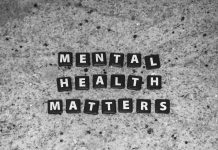Alternative medicine and a holistic approach to treatment is now more common than ever in hospitals, so Western medicine is finally catching up to what Eastern practitioners have always known – that the root cause of an ailment goes much deeper than the symptoms which manifest. Yet even today, Western medicine’s primary focus remains on the physical manifestation of an illness. Medical forensics trace disease only on the physical plane. But now even Science acknowledges, energy and consciousness are what manifest physically. So it follows that disease, especially chronic illness, has its source beyond the physical realm, therefore the healing must happen in this realm.
If the issue is an external infection – such as a virus or bacteria, then the prescription calls for a Western cure, such as antibiotics. However if the issue is internal – such as chronic organ disease, mental or emotional problems, chronic pain, lethargy, etc. then we must supplement the doctor’s visit with an inward perspective for healing. In these cases there must be some karmic or energy imbalance at play, and just treating the symptoms may bring temporary relief but there is no healing.
A cure is a singular remedy, whereas healing involves a multi-dimensional journey. The approach to healing is holistic and involves applying conscious awareness to all dynamics of one’s life.
- Eating – whether adopting a general approach such as vegan / vegetarian, a natural foods diet, or a specifically prescribed Ayurvedic diet to address the illness, eating consciously is key.
- Exercise – keeping the body fit through physical exercise is un-arguable no matter what medical tradition we follow.
- Self-Care – just as important yet often overlooked: conscious awareness of one’s body with loving compassion and gratitude. There are body awareness mindfulness exercises to help.
- Yoga – applied properly as originally intended, yoga is the quintessential practice that brings spirituality and the physical body into balance and in union with creation.
- Sleep – the body needs total (mindful) rest, or sleep, to rebuild its energy reserves. With a lifestyle that sustains one’s prana (or life energy) at peak levels, the quota for sleep goes down.
- Outlook – a joyful, non-judgmental, and compassionate outlook on life nurtures healing to happen naturally. This means equanimity and non-discretion towards all that makes up life.
- Spiritual Foundation – being spiritual means being aligned within so you’re not fighting yourself, and it means being in union with creation so you’re not fighting with the universe. The measure for this is the role the ego plays in each moment of one’s life.
- The Prescription – beyond these above, which are just as much preventative as they are healing, the prescription back to health comes from seeking expert practitioners in Eastern and Western traditions. But the key is to take charge of one’s path to health and directly engage in charting the course to wellness with the medical professionals, holistically and dynamically.
Just as medical doctors deal with physical biology, spiritual healers work with well recognized alternative therapies. Johns Hopkins Medicine mentions some of these practitioners, sometimes referred to as CAM (complementary and alternative medicine):
- Acupuncture
- Ayurveda
- Homeopathy
- Naturopathy
- Chinese or Oriental Medicine
- Chiropractic and osteopathic medicine
- Massage
- Body movement therapies
- Tai chi
- Herbal medicine
- Meditation
- Biofeedback
- Hypnosis
- Visualization and guided imagery
- Art, dance, music therapies
A way to distinguish spiritual healing is to think of it as soul-centric treatment. And then again, isn’t living a fulfilled and joyful life soul-centered, rather than ego-centered?
47 Most Famous Motivational Quotes of All-Time
49 Greatest Love Quotes
37 Inspirational Quotes that Will Change Your Life






























